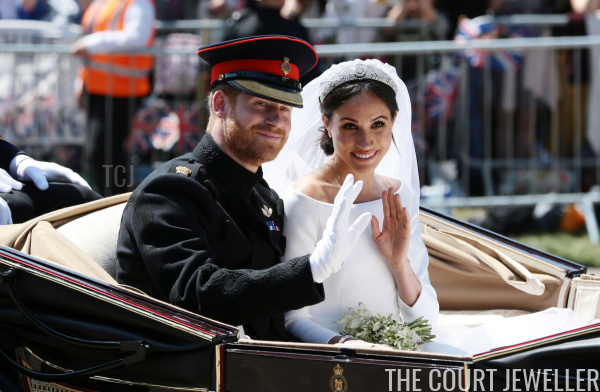
All right, everybody. I think it’s finally time to delve into a topic that has been requested consistently for almost two years: the reported conflict that cropped up between the Duke and Duchess of Sussex and palace staff over Meghan’s wedding tiara. I’ve avoided writing about the subject in the past for a couple of reasons. For one, the jewelry-centric details of the story just don’t totally make sense. And for another, this isn’t a website devoted to gossip about the royals. But as more and more versions of the story have been published, I think that a website devoted to facts and history about royal jewels may be the perfect place to straighten out what we know—and what we don’t know—about the story that some in the press have begun calling “tiaragate.”
So far, we’ve essentially heard three different versions of the story. All have one thing in common: in February 2018, Harry and Meghan went to Buckingham Palace to choose Meghan’s wedding tiara. Afterward, some sort of conflict ensued. Exactly when that conflict happened, and with whom, and for what reason, are the big differences between the three accounts.
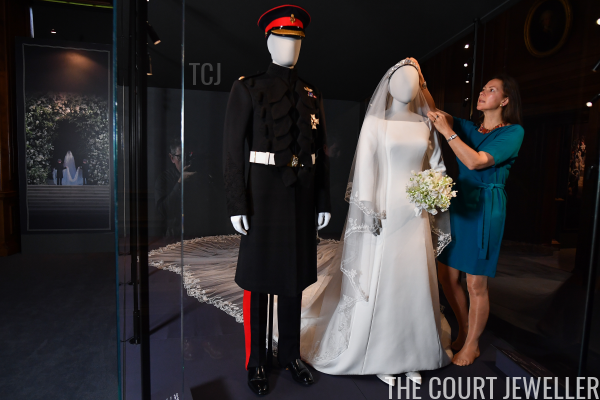
We first learned details of the tiara-selection appointment in October 2018. Harry and Meghan, now the Duke and Duchess of Sussex, recorded an audio interview as part of an official Royal Collection exhibition of their wedding clothes. They spoke extensively about the experience of choosing her bridal tiara. “I was very fortunate to be able to choose this gorgeous Art Deco-style bandeau tiara,” Meghan recalled. “Harry and I had gone to Buckingham Palace to meet with Her Majesty the Queen to select one of the options” offered for the wedding. She called the experience “incredibly surreal.”
In this telling of the event, Meghan made up her mind quickly to wear Queen Mary’s Diamond Bandeau. She remembered that the tiara “stood out” among the options provided because “it was so clean and simple,” working perfectly with the timeless-but-modern design style that she and Clare Waight Keller had developed for her bridal look. Harry agreed, saying that the bandeau “suited [Meghan] the best” and “looked the best on [her] without question.” He also noted that he “shouldn’t really have been there”—presumably because it ruined part of the surprise of her wedding ensemble—but called the moment that they shared with his grandmother “very sweet.”
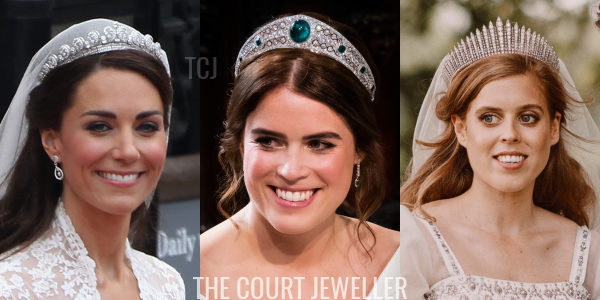
The “bride goes to Buckingham Palace to choose a tiara” moment has happened more than once in recent memory. Almost ten years ago, as Kate Middleton was preparing for her wedding to the Duke of Cambridge, she also visited the palace to select a tiara. Two of her hairdressers later shared some details with Vanity Fair. Richard Ward revealed that Kate “had three options” provided for her to choose from, one of which was the Cartier Halo Tiara. He also noted that it was “nerve-racking having to fit the tiara” in Kate’s hair. James Pryce, another of Kate’s hair stylists, told the magazine that the team “came up with a unique concept” for securing the tiara in her hair, practicing ahead of the day with a “cheap, £6.50 tiara from Claire’s Accessories.” More recently, Princess Eugenie reportedly visited the palace ahead of her October 2018 wedding to be shown tiara options by the Queen and Angela Kelly, who serves as “Her Majesty’s Personal Advisor and Curator (The Queen’s Jewellery, Insignias and Wardrobe) and In-house Designer.” Presumably Princess Beatrice also experienced something similar, as the Queen and Kelly were reportedly both deeply involved in the selection, tailoring, and fitting of her bridal ensemble.
Shortly after Meghan and Harry’s simple and positive re-telling of the experience was shared with the world, another version of the story was offered. In his biography of the Prince of Wales, Charles at Seventy, Robert Jobson wrote that, in the lead-up to the royal wedding, Prince Harry “was, according to an inside source, ‘petulant and short-tempered’ with members of staff. He insisted, on occasions, raising his voice: ‘What Meghan wants, she gets.’ At times sources close to the Queen said he was ‘downright rude.’ Once his tiresome behaviour reached the Queen’s ears, she asked to see him privately and put him firmly in his place.”
Jobson’s book was published in November 2018. As review copies were being circulated among members of the press, one of them, the Sun‘s Dan Wootton, reportedly decided to look more closely at Jobson’s brief anecdote about pre-wedding tension. On November 9, he published a story claiming that the conflict between Prince Harry and members of the staff had centered on questions about Meghan’s wedding tiara. According to Wootton and his “well-placed royal insider,” the diamond bandeau hadn’t been Meghan’s first choice. Instead, she’d “had her heart set on this tiara with emeralds.” When the couple were told that it was “impossible to wear it,” Wootton’s source claimed that “Prince Harry hit the roof,” sparking a “very heated exchange” that led the Queen to intervene.
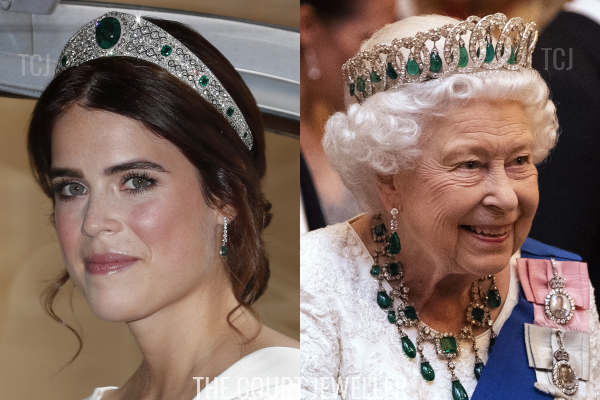
I was actually contacted by another royal correspondent on the day that Wootton’s story was published to discuss which emerald tiara may have been the source of the alleged conflict. I wasn’t able to provide any easy answers, either then or now. Wootton’s royal insider had reportedly told him that the problem with Meghan’s first-choice tiara was that its “provenance could not be established” and there were “concerns it could have come from Russia originally.” I was exceptionally puzzled by this part of the story. There aren’t many tiaras in the Queen’s collection that are set with emeralds. The most prominent, the Vladimir Tiara, has a documented Russian provenance. But that has never stopped the Queen from wearing it—and because she’s still actively using it, it was never likely to be one of the pieces she offered for Meghan to wear on her wedding day.
There are only a few other known pieces in the collection that could fit the bill. One of them, the emerald kokoshnik worn by Princess Eugenie on her wedding day in October 2018, is Russian in style but not in creation; it was made by Boucheron for Dame Margaret Greville. It’s possible, I suppose, that Meghan selected the kokoshnik but was later waved off by the palace as they researched more about its history. Most of us weren’t even sure that the kokoshnik was even in the royal vaults until Eugenie wore the tiara on her wedding day. Though the Queen Mother had inherited the kokoshnik in 1942, it had never been worn in public until that moment in the autumn of 2018.
The other emerald options that we know about—such as the Queen Mother’s convertible bracelet bandeau, or the diamond sunray bandeau that can be worn with various centerpieces, including one of the Delhi Durbar brooches—also just don’t seem to fit with the purported conflict. I suppose it’s ultimately quite possible that there’s an emerald tiara in the vaults that we don’t know about, and that the royals aren’t quite sure whether the acquisition of said tiara was entirely on the up-and-up. But all of this is just my own speculation.
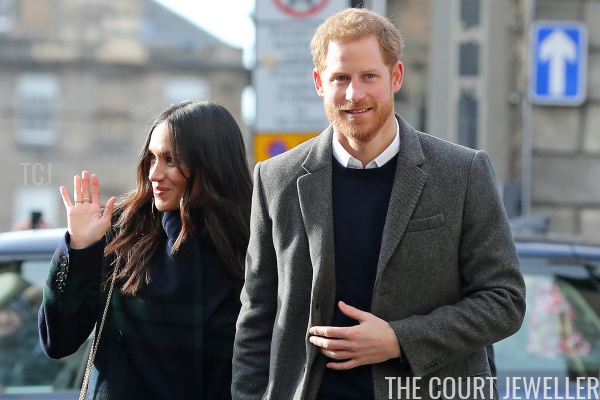
A second story, following on Wootton’s version of events, was published on November 10 in the Times. Valentine Low quoted “palace insiders” who shared information on Prince Harry’s exchanges with staff, characterized by them as “temper tantrums.” Low wrote, “The Times understands that the tiara the duchess wanted to wear was originally on a shortlist of five or six shown to her at Buckingham Palace. The palace later had concerns about its provenance and asked the duchess to choose from others.” But, according to Low, Meghan “insisted” that she wanted to wear the emeralds. Low’s source shared that “both the Queen and Angela Kelly… were taken aback at how forcefully the couple pressed the issue, with Prince Harry leading the charge.”
Kensington Palace declined to comment on the stories in both the Sun and the Times. When a second edition of Robert Jobson’s book was published in America the following year (as King Charles: The Man, the Monarch, and the Future of Britain), the text was updated to include extensive quotations from and references to the stories from the Sun and the Times. Jobson explained that Wootton, “intrigued by the story,” had “dug deeper” and “corroborated [Jobson’s] revelation” about the Queen’s intervention over the conflict between Harry and palace staff. Jobson added that Wootton’s “revelations were backed the following day” by Low in the Times, adding that Low had “confirmed [his] story that the Queen had spoken to Prince Harry” following the tiara dust-up.
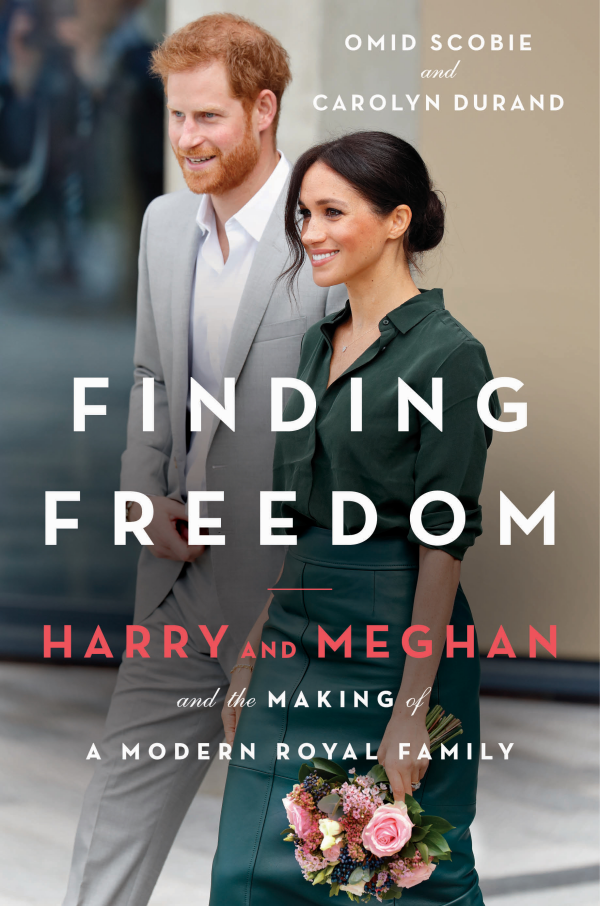
Almost a year later, the story has reared its head once more, with a third version being offered in a new biography of Harry and Meghan. The writers of Finding Freedom: Harry and Meghan and the Making of a Modern Royal Family, Omid Scobie and Carolyn Durand, also describe a conflict between Harry and royal staff ahead of the wedding. However, they contend that the source of the tension was not the tiara offered to Meghan, but rather her ability to access that tiara before the wedding day. Because Scobie and Durand claim that they “were able to gain extensive access to those closest to the couple” while writing the book, many have speculated that the book may essentially be a semi-authorized version of the couple’s own perspective. (Through a spokesperson, the Sussexes have clarified that they were not interviewed by the writers and did not contribute to the book, though they were “relaxed” about Scobie and Durand interviewing those “close to them.”)
Scobie and Durand allow that Meghan may have wanted to wear an emerald tiara for her big day, quoting “a source involved with elements of the wedding planning” who explained, “At some point during early planning there could have been talk about an ideal tiara having emeralds in it.” That’s reportedly because the color green played a major role in their aesthetic vision for the day. Finding Freedom also suggests that Meghan may have explored specific tiara possibilities before her appointment with the Queen at Buckingham Palace, noting that Meghan and Clare Waight Keller “looked through archival images of different tiaras” while developing their concept for her bridal look. (That bit of information seems like it might remove the Greville Emerald Kokoshnik from the mix. Because it had not yet been worn in public by a member of the royal family, no archival images of that particular tiara would have been readily available in early 2018.) But Scobie and Durand argue adamantly that Meghan did not arrive at the palace with a tiara agenda on her mind: “To borrow one of the tiaras was a privilege and a gift, and like most gifts, you took what you were given.”
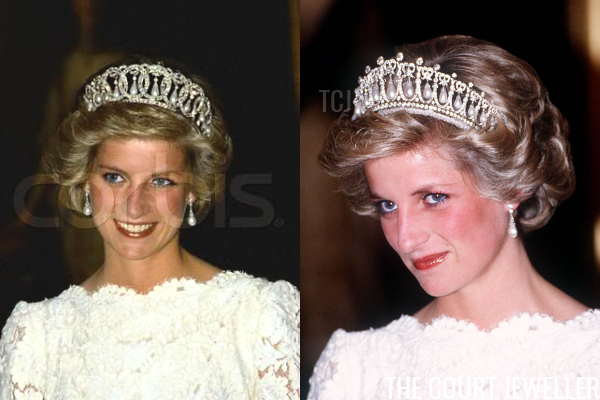
(A quick side note: Scobie and Durand aren’t great with jewelry details in their book. The biggest error comes in the middle of their version of the “tiaragate” story, when they claim that Diana, Princess of Wales wore the Vladimir Tiara. Possibly they were duped by one of the many photoshopped images floating around online? They also fumble slightly when discussing the inheritance of Diana’s jewelry, first arguing that the Royal Collection “doesn’t own any” of the jewels worn by the late princess, and then later stating that some of her “iconic pieces” were “passed on” to the Queen after her death. A bit more research, fact-checking, and editing would have helped this section a great deal.)
In Finding Freedom, Scobie and Durand paint a fairytale-like picture of Meghan’s tiara selection appointment, something straight out a film like The Princess Diaries. Their version of this part of the story largely corresponds with Harry and Meghan’s discussion of the moment in their earlier audio recording. Scobie and Durand write that the couple met with the Queen and Angela Kelly in a showroom-like vault in the basement of Buckingham Palace, where “five tiaras had been assembled for display” by the crown jeweler, Mark Appleby of Mappin and Webb. (He was not in the room during the selection appointment.) For the “extremely personal and intimate moment,” it was just Meghan, Harry, the Queen, and Kelly, who placed each tiara briefly on Meghan’s head as she sat before a large mirror. The curation of the offered tiaras, they write, had been a joint project of Kelly and the Queen, with Kelly “present[ing] various options” to HM, who “offered her own thoughts” as they decided on the final five. Scobie and Durand echo Meghan and Harry’s discussion of the final choice, saying that the diamond bandeau “outshone all the others” that Meghan tried on. They also quote a palace aide, who recalled, “It was a special moment for both of them”—that is, Meghan and the Queen.
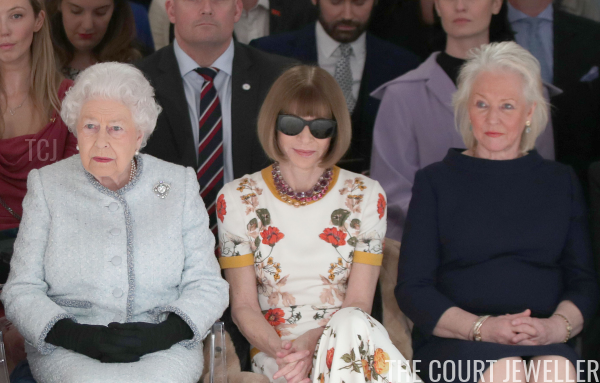
In this version of the story, the conflict happened after the tiara had been chosen. Scobie and Durand explain that the “dustup was between Angela Kelly and Harry.” Tensions arose when Meghan and her hairdresser, Serge Normant, wanted access to the tiara for a hair trial before the wedding. Finding Freedom depicts a clash between Harry, who sent requests for an appointment through Kensington Palace staff over a period of multiple weeks, and Kelly, who allegedly did not respond. They write that Harry “thought [Kelly] was purposely ignoring Meghan,” which led to “a heated exchange that was far from the typical restraint expected.” Ultimately, they write that Harry went straight to the Queen, and “she got her trial.”
In the days leading up to Finding Freedom‘s publication in August 2020, the book was circulated in press previews. The Mail on Sunday‘s Emily Andrews (who once co-hosted a podcast with Scobie) published a story on August 1 that provided yet another alternative perspective on the conflict. Andrews quoted “a Royal source” who said, “The book’s version of what happened would not be everyone else’s recollection of events and certainly not those who were close to it.” The article also quoted “a friend,” who noted that “Meg had flown her hairdresser over from Paris for a hair practice and they needed the tiara,” adding that when “Angela Kelly said she couldn’t come to London” to give them access to the jewel, “Harry went ballistic.”
Andrews wrote that the Queen “gave Prince Harry a dressing down for using offensive language about her closet aide” after he became angry at Kelly. Another “source” told Andrews that there is “protocol in place over these jewels,” which are “kept under very tight lock and key.” Another “Royal source” claimed that Harry “tried to get what Meghan wanted by ringing others to put pressure on Angela to bend the rules” about access to the tiara, stating that there “was never an appointment” made that Kelly did not keep.
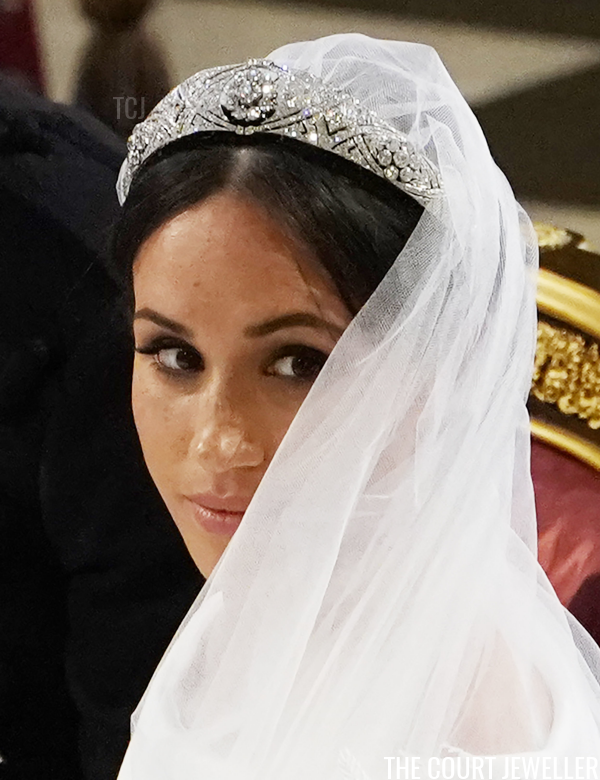
So that’s what we know, and what we don’t know, about the conflict that cropped up just before the royal wedding in 2018. Depending on who you ask, it may have involved a tiara, or maybe not, or it may have been an argument about access to a tiara, or possibly both. The main reason that I’ve been so reluctant to write about the story on this website has always been that the story is essentially about a personal disagreement rather than about the jewelry itself. And lots of the jewelry-specific details still don’t quite add up. But the bottom line is this: the Duchess of Sussex wore a lovely heirloom tiara on her wedding day, and she was apparently happy with the outcome of the situation. Finding Freedom includes one more detail about the issue: after the story about the tiara disagreement was aired in the press, Meghan “called a friend” to discuss how “sad” she was about the (presumably inaccurate) reports. Scobie and Durand supply us with a simple direct quote from Meghan on the topic: “I love my tiara.” Perhaps that should be the final word on the whole matter.
Leave a Reply
You must be logged in to post a comment.